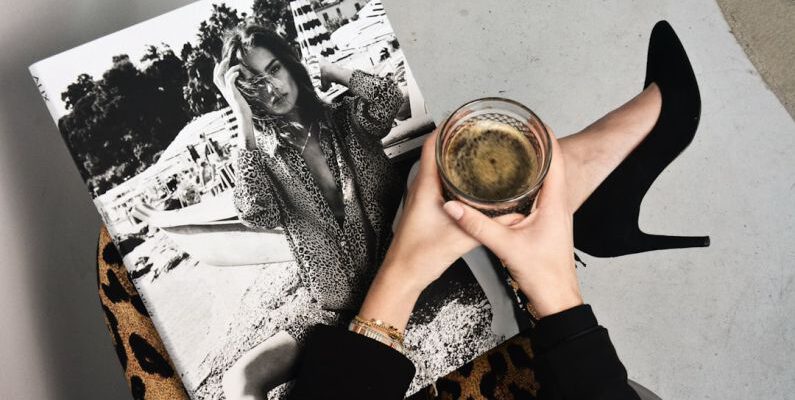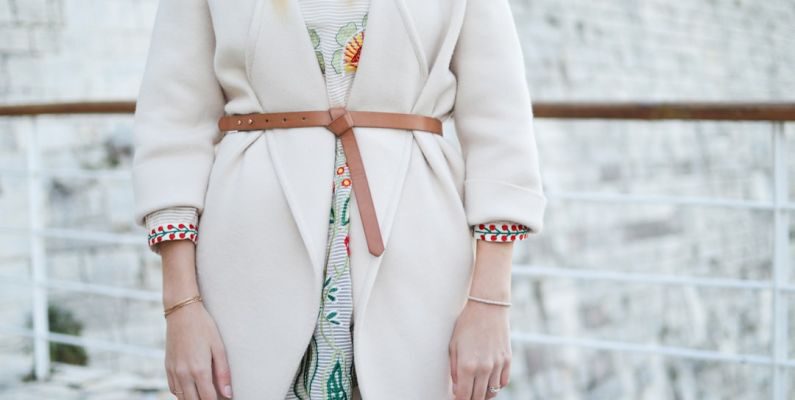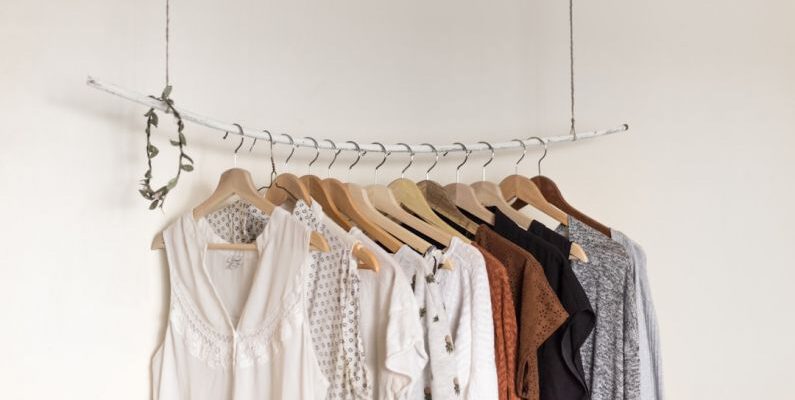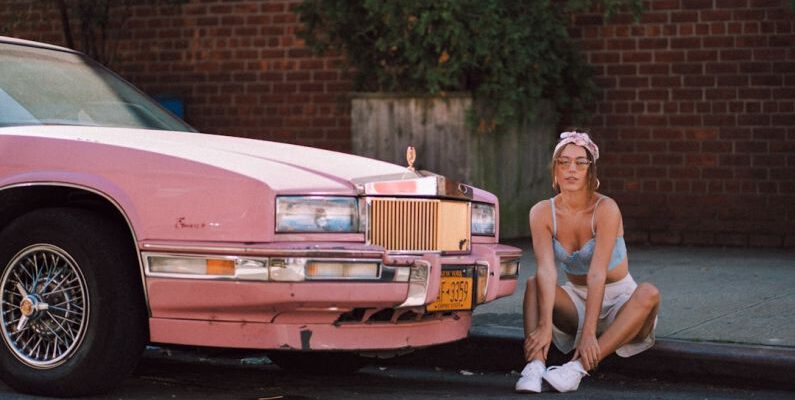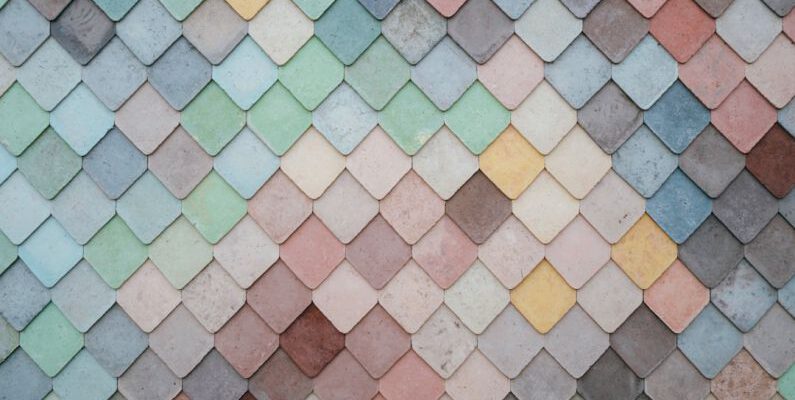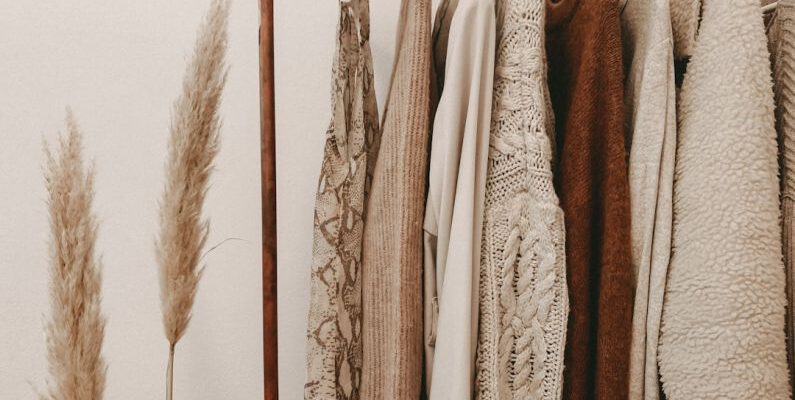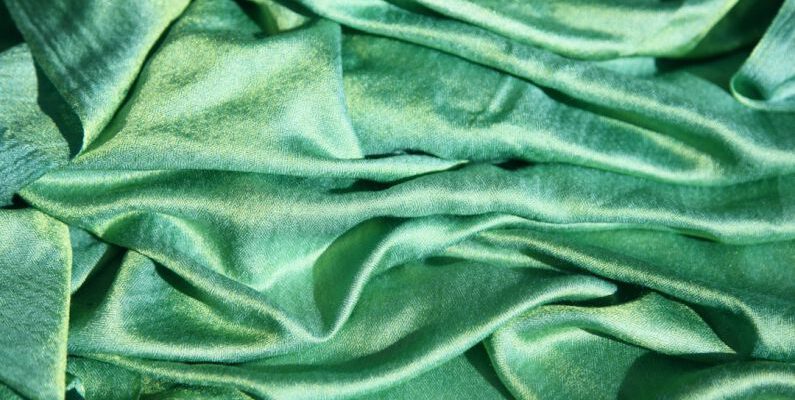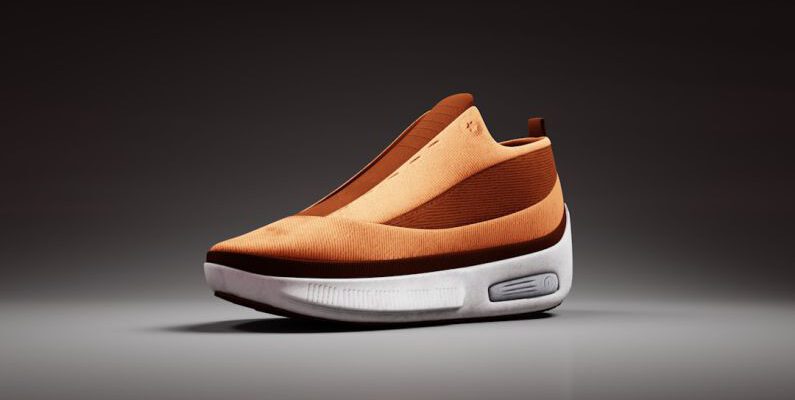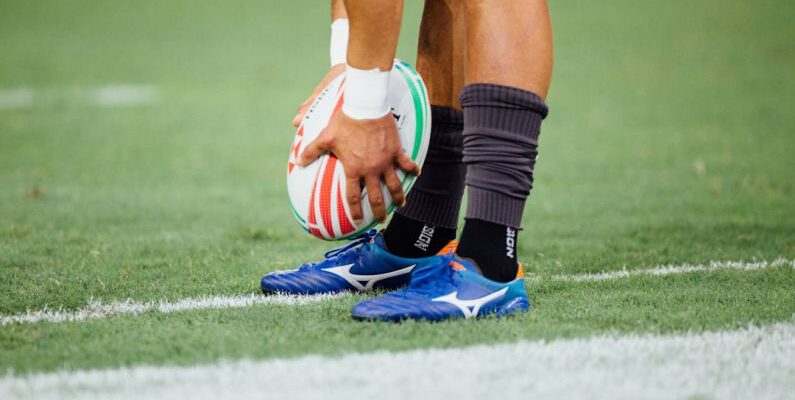When it comes to fashion, there is no one-size-fits-all approach. Every individual has a unique body shape and size, and understanding how to dress in a way that flatters your figure is key to looking and feeling confident. Whether you have an hourglass, pear, apple, or rectangle body shape, there are stylish options available for everyone. By following some simple guidelines and embracing your body type, you can dress fashionably and showcase your personal style with ease.
Fashion Trends
In today's fast-evolving work environment, the traditional office dress code is undergoing a significant transformation. Gone are the days of strict suits and ties being the norm; instead, companies are embracing a more casual and flexible approach to workplace attire. With this shift comes a new set of rules that employees need to navigate to ensure they are dressing appropriately while still expressing their individual style. Let's delve into the new rules of office dress codes and how you can strike the perfect balance between professionalism and personal flair.
The Rise of Casual Dress Codes
The rise of casual dress codes in the workplace has been a welcome change for many employees. Companies are recognizing that a relaxed dress code can boost morale, improve employee satisfaction, and even increase productivity. Dressing comfortably can help employees feel more at ease and confident, leading to a more positive work environment. However, it's essential to remember that casual doesn't mean sloppy. While you may not need to wear a full suit every day, it's still important to present yourself in a polished and put-together manner. Opt for smart casual attire that strikes a balance between professionalism and comfort. This could include tailored separates, button-down shirts, blouses, and well-fitted trousers or skirts.Personal Style vs. Professionalism
One of the key challenges of navigating the new office dress codes is finding the right balance between personal style and professionalism. While it's essential to express your individuality through your attire, it's equally important to ensure that your outfit is appropriate for the workplace. When incorporating your personal style into your work wardrobe, consider subtle ways to add flair without overshadowing professionalism. This could be through statement accessories, pops of color, or unique textures or patterns. Experiment with different combinations to find a look that reflects your personality while still adhering to the company's dress code guidelines.Dressing for Success in a Hybrid Work Environment
With the rise of remote work and hybrid work models, the lines between office attire and home attire have become increasingly blurred. Many employees find themselves transitioning between virtual meetings and in-person office days, requiring a versatile wardrobe that can adapt to different settings. When dressing for a hybrid work environment, opt for pieces that are comfortable, versatile, and easy to mix and match. Consider investing in a capsule wardrobe of essential pieces that can be dressed up or down depending on the occasion. This could include classic blazers, tailored trousers, versatile dresses, and comfortable yet polished footwear.The Impact of Sustainability on Office Dress Codes
As the focus on sustainability and ethical fashion continues to grow, many employees are reevaluating their approach to office attire. Sustainable fashion encompasses not only the materials and production processes of clothing but also the longevity and versatility of garments. When updating your work wardrobe, consider investing in timeless pieces that are well-made and durable. Opt for high-quality fabrics and classic silhouettes that will stand the test of time and can be styled in multiple ways. By prioritizing sustainability in your office attire, you can contribute to a more eco-friendly and conscious workplace culture.Adapting to Changing Norms
In conclusion, the new rules of office dress codes emphasize a blend of professionalism, personal style, comfort, and sustainability. As workplace attire continues to evolve, it's essential for employees to adapt to changing norms while staying true to their individuality. By striking the right balance between traditional professionalism and modern trends, you can dress for success in the dynamic landscape of today's work environment.
**How to Stay Fashionable on a Budget?**
In today's fast-paced world, keeping up with the latest fashion trends can sometimes feel like an expensive endeavor. However, looking stylish and on-trend doesn't have to break the bank. With a little creativity and savvy shopping skills, you can stay fashionable on a budget without compromising your personal style.
**Shop Off-Season**
One of the best ways to save money on clothing is to shop off-season. Retailers often discount items at the end of each season to make room for new inventory. This is a great opportunity to score some amazing deals on pieces that you can wear in the upcoming months. While it may require a bit of planning ahead, shopping off-season can save you a substantial amount of money in the long run.
**Thrift Shopping**
Thrift shopping has become increasingly popular in recent years, and for good reason. Thrift stores are treasure troves of unique and affordable clothing items that you won't find anywhere else. From vintage pieces to designer labels, you never know what hidden gems you might uncover while thrift shopping. Plus, shopping secondhand is a sustainable way to update your wardrobe without contributing to fast fashion waste.
**DIY and Upcycling**
Get creative and give your old clothes a new lease on life with some do-it-yourself projects. Whether it's adding patches to a pair of jeans, turning a t-shirt into a crop top, or embellishing a jacket with studs, upcycling your clothing can be a fun and budget-friendly way to stay fashionable. Not only will you save money by not having to buy new items, but you'll also have one-of-a-kind pieces that showcase your personal style.
**Sales and Clearance Sections**
Keep an eye out for sales and clearance sections both in-store and online. Many retailers offer deep discounts on their inventory, especially at the end of each season. By being patient and strategic with your shopping, you can score great deals on high-quality clothing items that will elevate your wardrobe without breaking the bank. Sign up for newsletters or follow your favorite brands on social media to stay informed about upcoming sales and promotions.
**Mix and Match**
Maximize your wardrobe by mixing and matching pieces to create new outfits. By experimenting with different combinations, you can create fresh and stylish looks without having to buy new clothes. Invest in versatile basics that can be easily paired with other items in your closet to create a variety of outfits. Don't be afraid to step out of your comfort zone and try new combinations – you might be surprised at the stylish outfits you can come up with using what you already own.
**Conclusion:**
Staying fashionable on a budget is all about being smart and creative with your shopping choices. With a little effort and a lot of imagination, you can build a stylish wardrobe that reflects your personal taste without spending a fortune. Remember, fashion is not about how much you spend, but how you express yourself through your clothing choices. So go ahead, embrace your inner fashionista and show the world that style doesn't have to come with a hefty price tag.
**What Are the Latest Trends in Sustainable Fashion?**
In recent years, the fashion industry has been making strides towards becoming more eco-friendly and socially responsible. Consumers are increasingly seeking out sustainable fashion options, leading to a rise in innovative trends that prioritize both style and ethics. From upcycling to circular fashion, let's explore some of the latest trends in sustainable fashion that are shaping the industry today.
**Upcycling and Repurposing**
One of the key trends in sustainable fashion is upcycling and repurposing materials to create new garments. Upcycling involves taking old or discarded items and transforming them into something new and fashionable. This trend not only reduces waste but also adds a unique touch to clothing pieces. Designers are getting creative by using old denim jeans to make new jackets, turning vintage scarves into trendy tops, and repurposing fabric scraps into accessories like bags or jewelry.
**Circular Fashion**
Circular fashion is another emerging trend that focuses on creating a closed-loop system in the fashion industry. This concept aims to minimize waste and environmental impact by designing garments that can be easily recycled or biodegraded at the end of their life cycle. Brands are adopting circularity by using sustainable materials, designing timeless pieces that last longer, and offering take-back programs to recycle old clothing. By embracing circular fashion, brands are moving towards a more sustainable and regenerative approach to fashion production.
**Ethical Sourcing and Transparency**
Ethical sourcing and transparency have become essential aspects of sustainable fashion. Consumers are increasingly demanding to know where and how their clothes are made, leading brands to be more transparent about their supply chains. Ethical sourcing involves using materials that are environmentally friendly and produced under fair labor conditions. Brands are partnering with ethical suppliers, supporting local artisans, and ensuring that workers throughout the supply chain are treated fairly. By prioritizing ethical sourcing and transparency, brands can build trust with consumers and create a more sustainable fashion industry.
**Innovative Materials**
Innovative materials are playing a significant role in driving sustainability in the fashion industry. Designers are exploring alternative materials such as organic cotton, hemp, bamboo, and Tencel, which have lower environmental impacts compared to traditional fabrics like polyester or nylon. Additionally, advancements in technology have led to the development of innovative materials like lab-grown leather, mushroom leather, and recycled polyester made from plastic bottles. These materials offer sustainable alternatives to conventional fabrics, reducing the industry's reliance on harmful resources and contributing to a more eco-friendly fashion landscape.
**Local Production and Slow Fashion**
Local production and slow fashion are gaining momentum as consumers seek to support small businesses and reduce the carbon footprint of their clothing. Slow fashion encourages mindful consumption by promoting quality over quantity, encouraging consumers to invest in well-made pieces that will last for years. By producing clothing locally, brands can reduce transportation emissions, support local economies, and ensure greater transparency and control over the production process. Local production also allows for closer collaboration with artisans and craftsmen, preserving traditional techniques and promoting cultural heritage in fashion.
**Conclusion: Embracing Sustainability in Fashion**
As the fashion industry continues to evolve, sustainability has become a driving force in shaping the future of fashion. From upcycling and circular fashion to ethical sourcing and innovative materials, the latest trends in sustainable fashion are paving the way for a more responsible and conscious approach to clothing production. By embracing these trends, brands can not only reduce their impact on the environment but also meet the growing demand for ethical and sustainable fashion among consumers. Sustainable fashion is not just a trend but a necessary shift towards a more sustainable and ethical future for the industry.
Fashion is a cyclical industry where trends from the past often find their way back into the spotlight. In recent years, we have seen a resurgence of several iconic styles that have been reimagined for the modern age. From bold patterns to statement accessories, let's explore the fashion trends that are making a comeback and taking the fashion world by storm.
Retro Glamour: Old Hollywood Vibes
One trend that has been making a comeback in a big way is the old Hollywood glamour of the 1950s and 1960s. Think figure-flattering silhouettes, structured dresses, and elegant accessories. This vintage-inspired look has been seen on runways and red carpets alike, with celebrities and fashionistas embracing the timeless elegance of this era. From tailored blazers to high-waisted trousers, the retro glamour trend is all about channeling the sophistication and glamour of a bygone era.70s Bohemian Chic: Free-Spirited Vibes
Another trend that is making a comeback is the 70s bohemian chic style. Characterized by flowing maxi dresses, fringe details, and bold prints, this free-spirited trend is all about embracing your inner flower child. From crochet tops to suede skirts, the 70s bohemian chic trend is perfect for those who love to mix and match different textures and patterns. Whether you're heading to a music festival or just want to add a bohemian touch to your everyday wardrobe, this trend is a fun and playful way to express your personal style.90s Minimalism: Effortless Vibes
The 90s minimalism trend is all about clean lines, neutral colors, and understated elegance. Popularized by iconic supermodels like Kate Moss and Carolyn Bessette Kennedy, this trend is a nod to the less-is-more approach to fashion. From slip dresses to tailored blazers, the 90s minimalism trend is perfect for those who prefer a more laid-back and effortless style. Pairing simple pieces with statement accessories is key to mastering this trend and adding a touch of modern sophistication to your look.80s Power Dressing: Bold Vibes
Power dressing from the 80s is back with a bang, and it's all about bold colors, sharp tailoring, and exaggerated silhouettes. This trend is all about making a statement and exuding confidence through your wardrobe choices. From oversized blazers to shoulder pads, the 80s power dressing trend is a fun and empowering way to experiment with fashion and show off your strong and fearless side. Whether you're heading to the office or a night out on the town, this trend is sure to turn heads and make a powerful statement.Mixing and Matching: Eclectic Vibes
One of the key trends that are making a comeback is the art of mixing and matching different styles, patterns, and textures. Fashion is all about self-expression, and mixing and matching allows you to create unique and personalized looks that reflect your individuality. From pairing floral prints with stripes to mixing bold colors with neutral tones, the eclectic trend is all about pushing the boundaries of traditional fashion rules and embracing your creativity. Whether you're a maximalist at heart or prefer a more minimalist approach, mixing and matching is a fun and exciting way to play with your style and make a fashion statement. In conclusion, the fashion world is constantly evolving, with trends from the past resurfacing and being reimagined for the present. Whether you're a fan of retro glamour, bohemian chic, minimalism, power dressing, or eclectic mixing and matching, there's a trend for everyone to embrace and make their own. So, don't be afraid to experiment with your style, mix things up, and have fun with fashion - after all, style is all about expressing yourself and feeling confident in what you wear.
In a world dominated by fast fashion and mass-produced garments, there is a growing appreciation for handmade and artisanal fashion pieces. These unique creations hold a special place in the hearts of fashion enthusiasts and conscious consumers alike. But what makes these handmade and artisanal pieces so special? Let's delve into the reasons behind the allure of these one-of-a-kind treasures.
Craftsmanship and Attention to Detail
Handmade and artisanal fashion pieces are crafted with meticulous attention to detail and a level of craftsmanship that is often unmatched by mass-produced items. From hand-sewn embroidery to intricate beading, these pieces showcase the skill and artistry of the maker. Each stitch, fold, and embellishment is carefully thought out and executed, resulting in a garment that is truly a work of art. The human touch that goes into creating handmade and artisanal fashion pieces adds a level of authenticity and soul that is hard to replicate in factory-made clothing. When you purchase a handmade garment, you are not just buying a piece of clothing - you are investing in the time, effort, and expertise of the artisan behind it.Unique and Individualistic
One of the most alluring aspects of handmade and artisanal fashion pieces is their uniqueness. Unlike mass-produced garments that are churned out in large quantities, handmade pieces are often one-of-a-kind or produced in small batches. This means that when you wear a handmade garment, you are unlikely to bump into someone wearing the exact same thing. The individualistic nature of handmade fashion allows you to express your personal style in a way that is truly unique. Whether it's a hand-painted silk scarf or a hand-knitted sweater, these pieces add a touch of personality and character to your wardrobe that sets you apart from the crowd.Supporting Artisans and Small Businesses
By choosing handmade and artisanal fashion pieces, you are not only investing in a high-quality, unique garment but also supporting independent artisans and small businesses. In a world where fast fashion giants dominate the market, it is essential to support local makers and craftspeople who pour their heart and soul into creating beautiful pieces. When you purchase a handmade garment, you are directly contributing to the livelihood of the artisan behind it. Your support helps sustain traditional craftsmanship and ensures that these skills are passed down to future generations. By buying handmade, you are making a conscious choice to support ethical and sustainable practices in the fashion industry.Environmental Impact
In an era of fast fashion and disposable clothing, handmade and artisanal fashion pieces offer a more sustainable alternative. By investing in high-quality, well-made garments, you are reducing your impact on the environment and promoting a more conscious approach to fashion consumption. Handmade pieces are often crafted from natural, sustainable materials and produced in small quantities, reducing the carbon footprint associated with mass production. Additionally, the longevity of handmade garments means that they are less likely to end up in landfills, contributing to a more circular and eco-friendly fashion cycle.Embracing Slow Fashion
Handmade and artisanal fashion pieces are emblematic of the slow fashion movement, which advocates for a more mindful and sustainable approach to clothing consumption. Slow fashion encourages consumers to invest in quality over quantity, to cherish and care for their garments, and to support ethical and transparent practices in the fashion industry. By choosing handmade and artisanal pieces, you are aligning yourself with the principles of slow fashion and embracing a more conscious way of dressing. These pieces are not just trends to be discarded after a season but timeless treasures to be cherished for years to come. In conclusion, Handmade and artisanal fashion pieces hold a special place in the hearts of those who appreciate craftsmanship, individuality, and sustainability in their clothing choices. These unique creations offer a level of artistry and authenticity that is hard to find in mass-produced garments, making them truly special additions to any wardrobe. By supporting independent artisans and embracing the principles of slow fashion, you are not just buying a piece of clothing - you are investing in a story, a tradition, and a more sustainable future for the fashion industry.
Vintage fashion has made a remarkable comeback in recent years, with many fashion enthusiasts embracing the charm and elegance of styles from past decades. Incorporating vintage elements into modern outfits can add a unique twist to your look, creating a harmonious blend of old and new. Whether you are a seasoned vintage lover or just dipping your toes into the trend, there are various ways to seamlessly integrate vintage styles into your everyday wardrobe.
**Mix and Match**
One of the easiest ways to incorporate vintage styles into modern outfits is by mixing and matching pieces from different eras. Pairing a vintage blouse with contemporary jeans or a classic pencil skirt with a modern graphic tee can create a visually interesting ensemble that showcases your personal style. Experiment with layering vintage and modern pieces to create a cohesive look that feels fresh and individual.
**Accessorize with Vintage Finds**
Accessories play a crucial role in defining your overall look, and vintage accessories can add a touch of nostalgia and character to any outfit. Opt for timeless pieces such as retro sunglasses, statement jewelry, or a vintage handbag to elevate your modern attire. Vintage scarves, belts, and hats are also versatile accessories that can effortlessly complement contemporary ensembles.
**Incorporate Vintage Prints and Patterns**
Vintage prints and patterns can instantly infuse a sense of nostalgia into your outfit. From floral motifs to geometric designs, incorporating vintage-inspired prints into your modern wardrobe can add a playful and whimsical touch to your look. Consider wearing a retro-inspired floral dress or a pair of vintage-style trousers to inject a dose of vintage charm into your everyday attire.
**Embrace Retro Silhouettes**
Retro silhouettes are a defining feature of vintage fashion and can be a fun way to experiment with different styles. Channel the glamour of the 1950s with a full circle skirt or embrace the bohemian spirit of the 1970s with flared jeans. Mixing retro silhouettes with contemporary pieces can create a fashion-forward look that pays homage to the past while staying relevant in the present.
**Customize Vintage Pieces**
If you have a penchant for DIY projects, customizing vintage pieces can be a creative way to incorporate vintage styles into your modern wardrobe. Whether it's adding patches to a denim jacket, embellishing a vintage blouse with embroidery, or distressing a pair of vintage jeans, adding a personal touch to vintage garments can make them feel fresh and unique. Get inspired by the latest trends and let your creativity run wild to breathe new life into vintage pieces.
**Revamp Vintage Finds**
Vintage shopping can unearth hidden treasures that may need a bit of updating to fit seamlessly into your modern wardrobe. Consider taking vintage pieces to a tailor for alterations or repairs to ensure they fit you perfectly. Adding modern touches such as a belt to cinch a vintage dress or styling a vintage blazer with contemporary bottoms can give new life to old pieces and make them more wearable for everyday occasions.
**Experiment with Vintage-Inspired Makeup and Hairstyles**
Completing your vintage-inspired look with makeup and hairstyles can further enhance the retro vibe of your outfit. Experiment with winged eyeliner, bold red lips, or a classic updo to complement your vintage ensemble. Vintage-inspired hairstyles such as victory rolls, finger waves, or a sleek bob can add a touch of old-world glamour to your overall look, tying together your modern outfit with a vintage twist.
**Elevate Your Style with Vintage Accessories**
Vintage accessories can be the perfect finishing touch to elevate your modern outfits. From statement hats to retro handbags, vintage accessories can add a touch of sophistication and individuality to your look. Opt for timeless pieces such as cat-eye sunglasses, pearl earrings, or a vintage brooch to infuse your outfit with a hint of vintage charm. Mixing and matching vintage accessories with contemporary pieces can create a fashion-forward look that seamlessly blends old and new.
**Incorporating vintage styles into modern outfits is a creative way to showcase your personal style and pay homage to fashion trends of the past. Whether you prefer subtle nods to vintage fashion or bold retro-inspired ensembles, experimenting with vintage elements can add a unique flair to your everyday wardrobe. By mixing and matching pieces, accessorizing with vintage finds, embracing retro prints and silhouettes, customizing vintage garments, revamping vintage finds, and experimenting with vintage-inspired makeup and hairstyles, you can effortlessly incorporate vintage styles into your modern outfits and make a sartorial statement that is uniquely yours.**
Neutral Colors Dominating This Season’s Wardrobe
When it comes to fashion trends, one of the prevailing themes this season has been the dominance of neutral colors in wardrobes around the world. From runways to street style, neutrals have taken center stage, replacing the bold hues and patterns that have often captured attention in previous seasons. But why exactly are neutral colors reigning supreme in the fashion world right now? Let’s delve into the reasons behind this sartorial shift.The Timeless Appeal of Neutrals
Neutral colors, such as beige, ivory, taupe, grey, and white, have always held a timeless appeal in the realm of fashion. These versatile shades are known for their ability to effortlessly complement a wide range of styles and aesthetics, making them a staple in any wardrobe. While trends may come and go, neutrals have a staying power that transcends seasonal fluctuations, making them a reliable choice for those looking to build a versatile and long-lasting wardrobe.Effortless Elegance and Versatility
One of the key reasons behind the current popularity of neutral colors is their inherent ability to exude a sense of effortless elegance and sophistication. Whether it’s a crisp white shirt, a camel coat, or a pair of tailored beige trousers, neutrals have a way of elevating even the simplest of outfits to a chic and polished level. Their understated nature allows for easy pairing with other pieces, making them a go-to option for those seeking versatility and easy styling options.Minimalism and Clean Aesthetics
In a world where minimalism and clean aesthetics are increasingly valued, neutral colors offer a sense of calm and simplicity that resonates with many fashion enthusiasts. The understated beauty of neutrals allows for a focus on clean lines, impeccable tailoring, and thoughtful design details, creating a sense of harmony and balance in outfits. Whether it’s a monochromatic look or a mix of different neutral tones, the result is often a visually pleasing ensemble that speaks to the current preference for simplicity and refinement in fashion.Embracing Sustainability and Timelessness
As the fashion industry continues to grapple with issues of sustainability and ethical consumption, the appeal of neutral colors lies in their timeless quality and longevity. Investing in neutral pieces means investing in items that are less likely to go out of style, reducing the need for constant wardrobe updates and minimizing the impact of fast fashion on the environment. By choosing neutrals, fashion-conscious individuals can build a wardrobe that transcends trends and stands the test of time, aligning with the growing movement towards sustainable and mindful fashion choices.Adaptability to Changing Seasons and Trends
Another reason behind the dominance of neutral colors this season is their adaptability to changing seasons and trends. Neutrals provide a solid foundation that can easily be updated with accessories or statement pieces to reflect current fashion influences. Whether it’s adding a pop of color with a vibrant scarf or incorporating a trendy silhouette in a neutral hue, the versatility of neutrals allows for effortless transitions between different styles and aesthetics, making them a practical choice for those who like to experiment with their wardrobe.The Enduring Allure of Neutrals
In conclusion, the prevalence of neutral colors in this season’s wardrobe can be attributed to a combination of factors, including their timeless appeal, effortless elegance, and adaptability to changing fashion preferences. As we navigate an ever-evolving fashion landscape, neutrals continue to stand out as a reliable and stylish choice that resonates with the values of sustainability, versatility, and enduring allure. Whether you’re a minimalist at heart or someone looking to build a cohesive and timeless wardrobe, neutrals offer a palette of possibilities that are sure to elevate your style game this season and beyond.
In recent years, the fashion industry has been under increasing scrutiny for its environmental impact. From water pollution to textile waste, the traditional fashion industry has left a significant footprint on the planet. However, a growing movement towards eco-friendly fashion is challenging the status quo and proving that sustainability and style can indeed go hand in hand.
The Rise of Eco-Friendly Fashion
The term "fast fashion" has become synonymous with cheap, trendy clothing produced at a rapid pace, often at the expense of both the environment and laborers. However, eco-friendly fashion brands are changing the game by prioritizing sustainability throughout the production process. These brands focus on using organic and recycled materials, reducing waste, and ensuring fair labor practices.Bye-Bye, Polyester; Hello, Sustainable Fabrics
One of the key ways that eco-friendly fashion brands are making a difference is through their choice of materials. Traditional fabrics like polyester are derived from non-renewable resources and contribute to microplastic pollution. In contrast, sustainable fabrics such as organic cotton, hemp, and Tencel are biodegradable and have a lower environmental impact. Innovative designers are also experimenting with innovative materials like pineapple leather, made from discarded pineapple leaves, and mushroom leather, derived from mycelium. These alternatives offer a cruelty-free and eco-friendly option for fashion-forward consumers who want to make a positive impact with their clothing choices.From Runway to Closet: The Accessibility of Eco-Friendly Fashion
While eco-friendly fashion was once associated with a niche market and higher price points, it is becoming increasingly accessible to the masses. Mainstream retailers are incorporating sustainable practices into their collections, offering affordable options for consumers who want to shop ethically without breaking the bank. Additionally, the rise of second-hand and vintage shopping has made it easier than ever to find stylish, pre-loved pieces that reduce the demand for new clothing production. Thrifting not only helps divert clothing from landfills but also allows individuals to express their unique style without compromising on sustainability.Fashion Forward: The Intersection of Style and Ethics
Contrary to the belief that eco-friendly fashion is synonymous with bland and shapeless clothing, many sustainable brands are proving that style and ethics can coexist. From chic minimalist designs to bold statement pieces, eco-friendly fashion is breaking stereotypes and showing that sustainability is anything but boring. By embracing innovative design techniques and collaborating with artists and artisans, eco-friendly brands are creating collections that are not only fashionable but also tell a story. Consumers are increasingly seeking out brands with a transparent supply chain and a commitment to social and environmental responsibility, driving the demand for ethical fashion forward.Parting Thoughts: The Future of Fashion
As awareness of the environmental and social impact of the fashion industry continues to grow, the demand for eco-friendly and trendy clothing is only expected to increase. By supporting brands that prioritize sustainability and transparency, consumers have the power to drive positive change in the industry and shape a more ethical and stylish future for fashion. In conclusion, the answer to whether fashion can be both eco-friendly and trendy is a resounding yes. With the rise of eco-friendly fashion brands, sustainable materials, and a shift towards conscious consumerism, the fashion industry is undergoing a much-needed transformation. By choosing to support brands that prioritize ethics and aesthetics, we can all play a part in creating a more sustainable and stylish world.
When it comes to high fashion, the images that often come to mind are of glamorous runway shows, avant-garde designs, and luxurious fabrics. However, one question that frequently arises is whether high fashion can be both comfortable and practical. Many people associate high fashion with sacrificing comfort for the sake of style, but in reality, there is a growing trend towards merging the worlds of high fashion and wearability. Designers are increasingly finding ways to create pieces that are not only visually striking but also functional and comfortable for everyday wear.
**The Evolution of High Fashion**
High fashion has traditionally been synonymous with elaborate designs, intricate details, and sometimes impractical silhouettes. Runway shows have been known to showcase designs that push the boundaries of creativity and challenge conventional notions of fashion. While these avant-garde creations may be awe-inspiring and thought-provoking, they are often not the most practical for everyday life.
**The Rise of Comfort and Practicality**
In recent years, there has been a noticeable shift in the fashion industry towards prioritizing comfort and practicality without compromising on style. Designers are now focusing on creating pieces that not only look good but also feel good to wear. This shift can be attributed to changing consumer preferences and lifestyles, as people are increasingly looking for clothing that can seamlessly transition from day to night and from work to leisure.
**Innovative Fabrics and Silhouettes**
One of the key ways in which designers are making high fashion more comfortable and practical is through the use of innovative fabrics and silhouettes. Fabrics like jersey, neoprene, and technical blends are being incorporated into high fashion designs, offering stretch, breathability, and ease of movement. Silhouettes are also becoming more relaxed and fluid, allowing for greater freedom of movement and versatility.
**Functional Details and Features**
Another aspect of high fashion that is becoming more focused on comfort and practicality is the inclusion of functional details and features. Pockets, adjustable straps, and removable elements are being integrated into designs to enhance usability and convenience. These thoughtful additions not only make the garments more practical but also add an element of functionality that resonates with modern consumers.
**The Intersection of High Fashion and Streetwear**
The rise of streetwear has also played a significant role in the blurring of lines between high fashion and comfort. Streetwear, with its emphasis on casual, comfortable clothing, has influenced high fashion in terms of silhouette, fabric choice, and overall aesthetic. Designers are now drawing inspiration from street style and incorporating elements of comfort and practicality into their high fashion collections.
**A New Era of High Fashion**
As the fashion industry continues to evolve, we are entering a new era where comfort and practicality are no longer mutually exclusive from high fashion. Designers are challenging traditional notions of what constitutes high fashion by creating pieces that are not only visually striking but also functional and comfortable to wear. This shift towards wearability is reflective of a broader cultural movement towards embracing individuality, self-expression, and comfort in fashion.
**In Conclusion: Redefining High Fashion**
In conclusion, the question of whether high fashion can be comfortable and practical is being answered with a resounding yes. The fashion industry is undergoing a transformation, with designers reimagining what high fashion can be by prioritizing comfort, practicality, and wearability. By embracing innovative fabrics, functional details, and the influence of streetwear, high fashion is entering a new era where style and comfort go hand in hand. This evolution is not only reshaping the way we think about fashion but also redefining the very essence of high fashion itself.
The Influence of Digital Platforms on Fashion Trends
In today's fast-paced digital age, the way we consume and interact with fashion has undergone a significant transformation. With the rise of social media, e-commerce, and online influencers, digital platforms have become powerful drivers of fashion trends. From Instagram to TikTok, these platforms have revolutionized how we discover, engage with, and ultimately adopt new styles. Let's explore the ways in which digital platforms are shaping and influencing fashion trends in the modern era.The Power of Social Media
Social media platforms like Instagram, Facebook, and Twitter have become the go-to sources for fashion inspiration and trend discovery. With millions of users sharing their outfits, style tips, and shopping hauls, social media has democratized fashion, making it more accessible and inclusive than ever before. Influencers and celebrities play a significant role in setting trends, with their posts and sponsored content often dictating what's in vogue. The visual nature of platforms like Instagram makes them ideal for showcasing fashion trends in real-time. Users can easily browse through a feed of curated fashion content, discovering new brands, styles, and looks with just a few taps. Hashtags and geotags further enhance the discoverability of fashion trends, allowing users to explore specific themes or locations.E-Commerce and Virtual Try-Ons
The proliferation of e-commerce platforms has also had a profound impact on fashion trends. Online retailers like ASOS, Amazon, and Net-a-Porter offer a vast array of clothing options, making it easier for consumers to stay on top of the latest trends. Virtual try-on features have further streamlined the shopping experience, allowing users to see how a particular garment looks on them before making a purchase. By integrating augmented reality and artificial intelligence technologies, e-commerce platforms are providing a more immersive and personalized shopping experience. Virtual try-on tools enable users to experiment with different styles and sizes, helping them make more informed purchasing decisions. This interactive approach to shopping has revolutionized the way consumers engage with fashion trends, blurring the lines between online and offline shopping experiences.The Rise of Influencer Marketing
Influencer marketing has become a dominant force in shaping fashion trends on digital platforms. Fashion influencers, bloggers, and content creators wield significant influence over their followers, often dictating what's considered fashionable and trendy. Brands frequently collaborate with influencers to promote their products, leveraging their reach and credibility to gain exposure and drive sales. Influencer collaborations and sponsored content have become commonplace on platforms like Instagram and TikTok, with influencers showcasing the latest fashion trends in creative and engaging ways. The authenticity and relatability of influencers make their content highly engaging, resonating with audiences and driving conversations around fashion trends.The Role of Data and Analytics
Digital platforms have also revolutionized the way fashion brands track and analyze consumer behavior. By leveraging data and analytics, brands can gain valuable insights into consumer preferences, shopping habits, and trend forecasts. This data-driven approach enables brands to tailor their marketing strategies, product offerings, and pricing strategies to meet the evolving demands of consumers. Social media analytics tools allow brands to monitor engagement metrics, sentiment analysis, and audience demographics, providing valuable feedback on the performance of their content and campaigns. By analyzing this data, brands can identify emerging trends, predict consumer behavior, and optimize their marketing efforts to stay ahead of the curve.Innovations in Virtual Fashion
The emergence of virtual fashion has opened up new possibilities for creativity and expression in the digital realm. Virtual fashion shows, digital avatars, and NFTs (non-fungible tokens) have blurred the boundaries between physical and digital fashion, offering a new way for designers and brands to showcase their collections and engage with consumers. Virtual fashion allows designers to experiment with avant-garde concepts, materials, and silhouettes that may not be feasible in the physical world. By creating digital garments and accessories, designers can push the boundaries of traditional fashion design, exploring new forms of self-expression and identity. Virtual fashion has also become a sustainable alternative to traditional manufacturing processes, reducing waste and environmental impact.In Conclusion
Digital platforms have become powerful catalysts for driving and influencing fashion trends in the modern era. From social media to e-commerce, influencer marketing to data analytics, these platforms are reshaping the fashion landscape, democratizing access to trends, and fostering creativity and innovation. As we continue to embrace the digital age, the influence of digital platforms on fashion trends is only set to grow, shaping the way we consume, engage with, and define fashion in the years to come.
In recent years, athleisure wear has taken the fashion world by storm, becoming a staple in many wardrobes around the globe. This trend, which combines athletic clothing with casual wear, has gained immense popularity for a variety of reasons. From its comfort and versatility to its ability to seamlessly transition from the gym to everyday activities, athleisure wear has become a go-to choice for many individuals looking for both style and function in their clothing.

